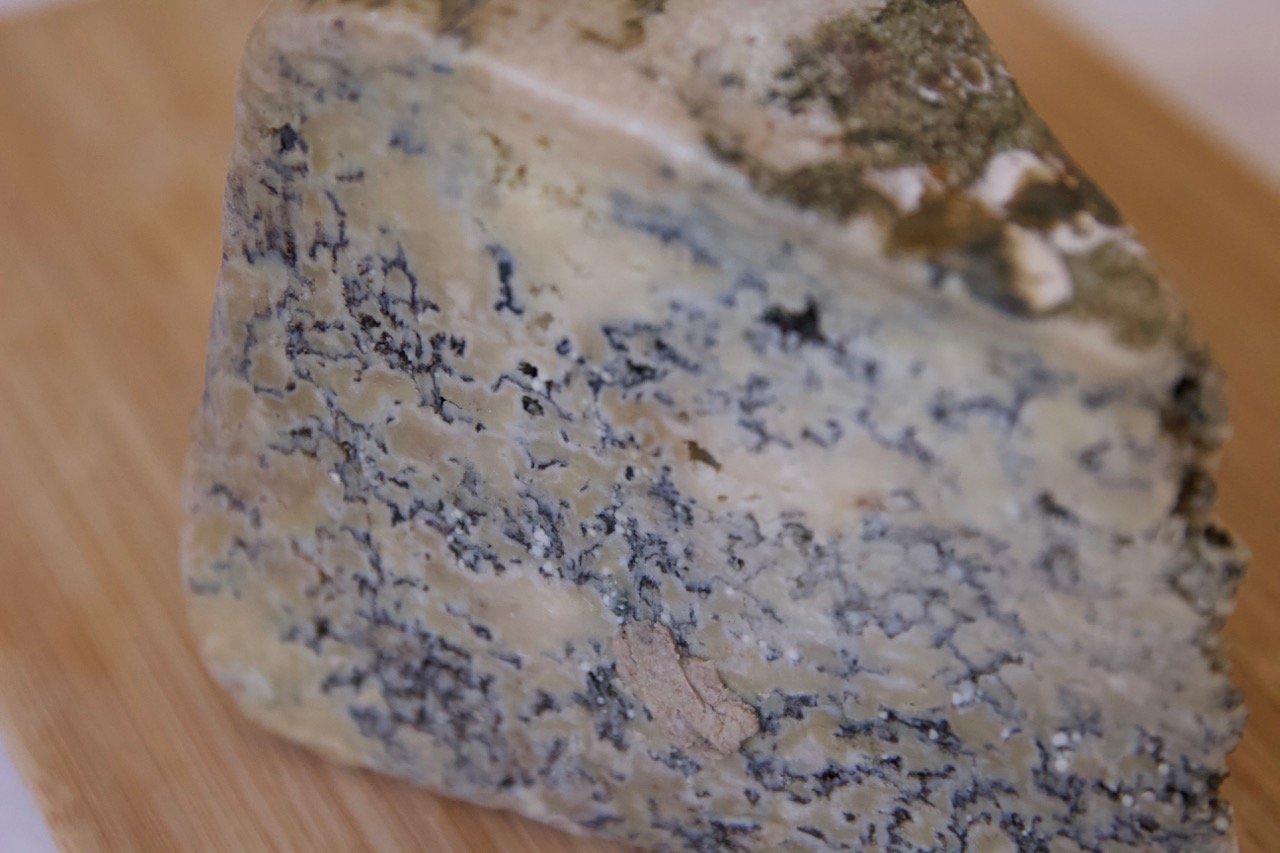History is full of anecdotes about things that just happen for no obvious reason. Today we know how a blue cheese becomes a blue cheese, but that has not always been the case. Thereof the heading of this post. But for most blue cheeses the expression is not valid today. But only for most, because there are still some. Well, perhaps not some. I will come back to that. Some insist blue cheese has been around since dawn, and it could just be. We do not know a lot about it, though. There are indications that the romans and ancient greek did not like it when it appeared and regarded it a flaw. That brings us back to the heading: Blue cheese isn’t made, it just happens.

Roquefort the first blue cheese?
The French are very concerned with this, claiming Roquefort was the first blue cheese.
They refer to Pliny the Elder who in his works Naturalis historia, published about year 79 ad, same year as he died by the way, describes a French cheese among many others. No indications this is blue cheese, and by no means referred to as Roquefort or specifically hailing from that area. French, no more specific than that. But described in positive terms, sharp and almost medicinal. Pliny the Elder was a true turophile and definitely took offence if he met someone who did not appreciate cheese.
.
A lot of descriptions
Up through history there are many descriptions of cheese; what is acceptable and non acceptable, good and not so good.
An English text from the 16th century describes cheese like this: Cheese should not be as white as snow is, not full of eyes as Argos was, nor old as Methusalem was, nor full of whey and weeping as Marie Magdalen was, nor rough as Esau was, nor full of spots as Lazarus. (Thomas Cogan: The Haven of Health – quoted from Cheese – A Global History) Perhaps not how we would describe cheese today, but they obviously were the metaphors of the time.

A fairly accurate description
I’ve probabbly mentioned Notker the Stammerer aka Notker Balbulus before. He travelled around to write down stories, anecdotes some would say, especially about Charlemagne. What’s interesting in this context is a meeting between Charlemagne and one of his bishops. As it was he arrived unexpectedly at the residence of one of his bishops en route to his headquarters in Aix-en-Chapelle. It was Friday and the bishop had no fish to serve the emperor as he was not given any advance notice. Consequently he served the best he had; cheese – blue cheese. Charlemagne dutifully ate the cheese, but pulled out all the blue mould using his knife. The bishop kindly remarked the emperor put away the best part of the cheese. Charlemagne then of course tasted the mould and liked the flavour.
He promptly ordered two lorry loads to be brought to his residence annually. When the bishop answered he could bot guarantee the cheeses were blue, the emperor abruptly responded by instructing the bishop to divide all cheeses in two before dispatch. End of discussion.

It just happens
As described in this story blue cheese is not originally a cheese someone set out to make. It happened. In 1960, in the book Cheeses of the World André Simon wrote about Cheshire, the famous English territorial “Cheshire Blue is not made, it happens”. It’s not the case anymore, Cheshire is absolutely made in both a white and a blue version.
But, there are cheeses even today where the blue process just happens. One of them is Bleu de Termignon from Savoie. This cheese is made at just a few farms high up in the mountains. The pasture is lush and contains small amounts of Penicillium Glaucum. This litterally travels through cow’s digestion system and ends up in the milk. As the cheese is made and matured, it develops blue moulds, definite but not exaggerated and not as we know it through the conventionally made blue cheeses.
An other cheese which has no blue culture added to the milk is the Spanish Cabrales. Penicillium Roqueforti has a natural habitat in the limestone caves where the cheese is matured. Subsequently when the cheese is entered into the caves the culture will settle on the cheese. No needles, just nature.
If you ever get a chance to taste these two, Bleu de Termignon and Cabrales, it’s well worth it.
Inspiration and source: Andrew Dalby: Cheese – A Global History
